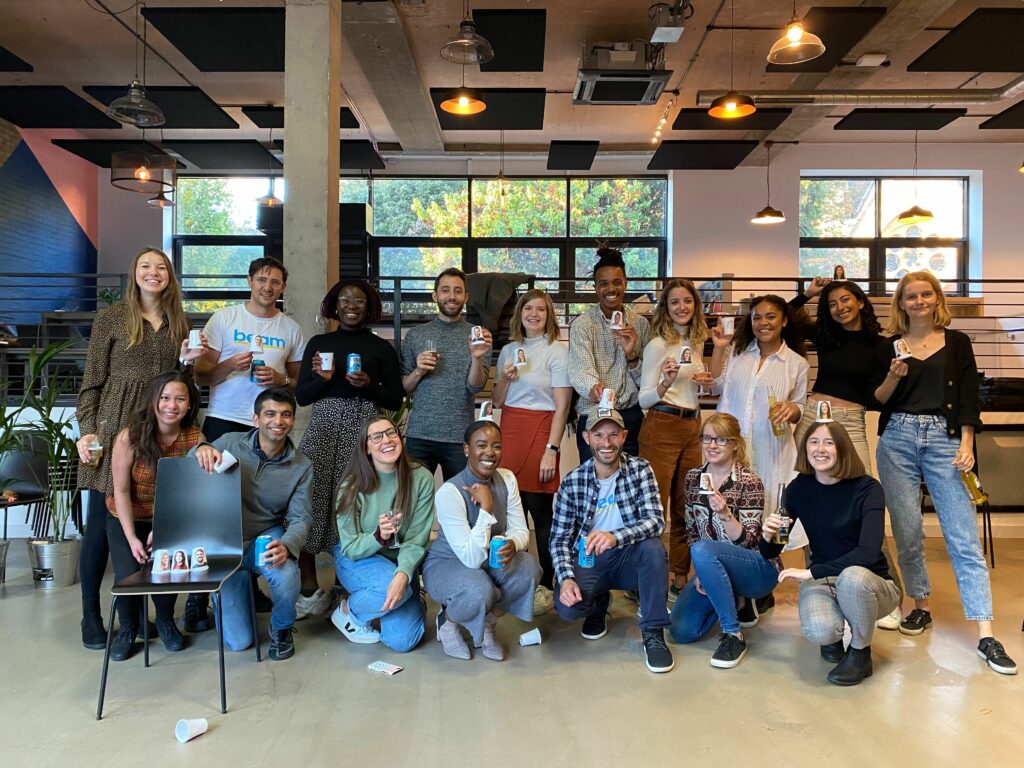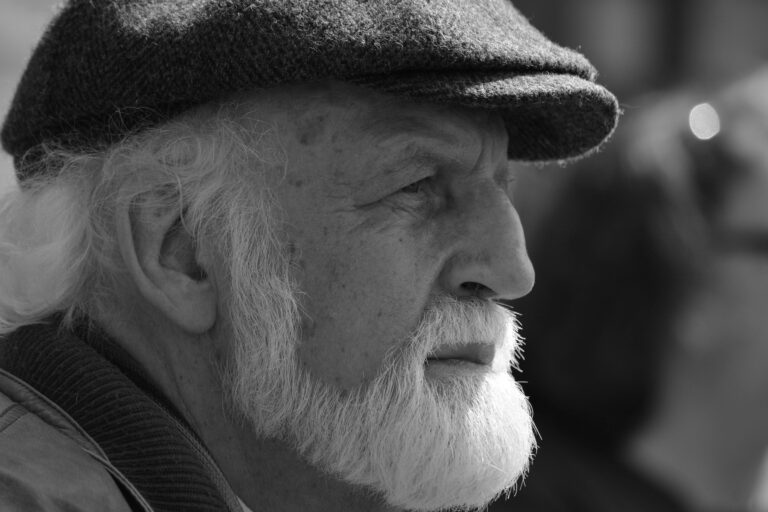
It might be an alarmingly frequent sight in our everyday lives, but homelessness is one of those issues where it’s all too easy to look the other way, to pass off as someone else’s problem. Alex Stephany, though, found he couldn’t ignore the man sitting outside his tube station any longer. He’d buy him socks, cups of coffee and they’d have a chat. And then, one day, he totally disappeared.
“Six weeks he was gone for, and when he finally turned up again, he looked awful,” Stephany remembers. “He told me that he’d been in hospital after a heart attack.”
But it was what he told Stephany next which really hit home. Here was a homeless man in his fifties who’d been out of work for longer than he could remember.
“I walked home thinking, this is terrible,” says Stephany. “I’d been trying to help this guy, but not only had I failed, he was in a much worse position than when we first met. What did this guy really need? Did he really need another cup of coffee? Or a pair of socks? No, he needed the support and the skills to get back into work and provide for himself. I thought, well, that’s going to cost more than a cup of coffee… but what if we all chipped in?”
Looking for a solution, Stephany set about using his background in tech companies – he had founded JustPark, the app and website which now connects 3.5 million drivers with public and private parking spaces across the UK. Combined with a strong moral purpose that had come from time volunteering for a legal charity – “it was eye-opening to see the most extreme poverty and desperation that can exist in London” – Stephany devised an incredibly simple idea to get homeless people back into work: a crowdfunding platform that could make smart, life-changing investments into people, directing money towards courses, work equipment and qualifications for those who need it the most.
“When I was running JustPark, we did the largest ever crowdfunding round for a tech startup,” he says. “So I thought, look, I understand this model. I’ve seen it can work to raise millions of pounds for a parking app – what if we can raise just a few thousand pounds to change someone’s life?”
And so the idea for Beam was born, with Stephany as founder and CEO. As their website puts it best nearly four years on, “you help fund their training, we support them into a career, they get a bright new future.” Browsing the stories is actually a profoundly moving experience; at the time of writing 469 campaigns have been funded by 7,467 people, which has got 197 people into work. They’ve received over £1.6 million in donations and everybody’s campaign gets funded within 100 days. In practice the average campaign size – £2,745 – is reached well within a month.
It’s interesting, though, that the usual aims of a tech startup, to be disruptive, digital and innovative, were not entirely appropriate in the homeless sector. After all, Beam would be dealing with people who no fault of their own are often vulnerable, isolated and excluded. Stephany had to spend a lot of time talking to people in different stages of homelessness and liaising with other charities and organisations before going live; he remembers a conversation with Tony, a recovering addict who had been out of work for 21 years and spent time in prison. He would become Beam’s first success story.
“He wanted to be an electrician, so we explained the idea of Beam to him, that we would raise money for his training,” says Stephany. “He liked the idea, of course, but he had one question: ‘why would anyone help me?’
“I couldn’t promise they would, of course, but I also thought that if we could make people want to care about Tony, then we could get the support he needed.”

Essentially, Beam’s nuanced model wasn’t about raising money for a nebulous cause, but using technology to get Tony to both explain his story online and emphasise what meeting his campaign total would mean to his entire future. Julian Keenaghan, now Head of Engineering and Product at Beam, built the first version of the website in his spare time, with the core idea of crowdfunding people into work through digital storytelling. He thinks this might be one of the reasons Beam stood out.
“This one-to-one model of support is unique to Beam,” he thinks. “For a standard charity website you’re often not making donations for an individual, so there’s a level of transparency and connection to Beam which has always stood out.”
So once Keenaghan had readied Beam to go live, calls were made to journalists about this story of a homeless person crowdfunding to be an electrician. Within days Tony was on Sky News, BBC and Reuters, and the £4,378 he needed was quickly raised, with donations as small as £5. It transpired people did care.
“My goals at the time were to get some qualifications, get a job, come off benefits and get a flat, all within a couple of years,” says Tony in his emotional video on the Beam website. “And I’ve got them. So I’ll now set some more. Without Beam I wouldn’t have been in that position… onwards and upwards.”
“Yes,” says Stephany, “his life in general is just immeasurably better than it had been. It was a pretty cool experience, and we could have stopped there and been proud of how we’d helped one person in a really meaningful way. But actually what we thought was how could we keep going, help more people who have never got a proper shot at life and give them a real opportunity to show what they can do.
“So Beam then became about using technology to effect scalable change, to support people to get new skills and get into work.”
It was this step change which transformed Beam from nice news story about Tony to a proper social enterprise with a charity arm, which ensures every penny donated goes straight to the homeless people who need it: for transport to get to work, training or tools. Stephany believes this 100% giving model is unique in their sector.
Obviously it costs money to run Beam, though, which is why the social enterprise element, Beam Up Ltd, generates cash and builds sustainability and scalability, too. Greater London Authority, Nesta, Social Tech Trust and many other foundations and private funders have met the costs of delivering the services as Beam’s success stories have continued to build.
“There are hundreds of organisations in London providing food, sleeping bags, mental health support – what we do is work with them very closely to focus on taking these people out of homelessness for good,” says Stephany. “So it’s a collaborative approach, working with government, with charities, with public and employers to build an ecosystem based around support and hope.”
RYAN'S STORY

Ryan, one of Beam’s success stories, tells us how his life has been transformed
Despite living and working in the US for 18 years, I was deported because of visa issues, which meant I ended up back in London in 2018, living on the streets in a freezing cold January with nothing but the clothes on my back. I literally walked to central London from Heathrow because I didn’t have a penny to my name.
It came to the point where a policeman saw me sleeping in a park, and suggested I get in touch with Veterans’ Aid as I used to be in the Household Cavalry. They got me a room in a hostel in east London, and helped me so much – psychologically as much as anything. So when they referred me to Beam as a potential way to fund some support and get me out of my situation, I was like, “let’s get it on!” I wasn’t at all worried about being in the public eye, effectively being crowdfunded for – it was all about trying out an unusual approach. If it didn’t work there was no harm done. And if it did work, well, my story might also help other people in similar situations.
We decided to put the money raised towards HGV training, as haulage was the industry I’d spent 18 years doing in America. I couldn’t get the support from Jobseeker’s Allowance, though, so that’s where Beam really helped. To know that 508 people raised £4,329 to get me the training is simply amazing.
I’ve been in driving jobs ever since, and I’ve got a flat now. I’m not joking, I would probably be dead if it wasn’t for Beam and Veterans’ Aid. I can’t thank everyone enough for what they’ve done for me: it just shows you that there are good people out there.

And that ecosystem has required a lot of technology to run efficiently, given there are so many stakeholders and users. “Supporters, donators, beneficiaries, government partners, charities, our own team… we all use the Beam tech platform in a different way,” says Keenaghan.
“Managing operations is challenging,” he admits. “How we deal with referrals, assessing people for suitability, and taking them on their journey through launching their campaign and supporting them through to work is complex and has a lot of moving parts. Building a product to support our team to run that, while keeping human contact at the core, has been challenging. But it’s also the way we can scale to support as many people as possible over the forthcoming years.”
And understanding that at the heart of the process were human beings with significant need has always been crucial to Stephany, too.
“Actually, a key part of what we do is give people who have been written off – and have often sadly written themselves off – some self-belief,” he says. “The real value here is the crowd of people, the supporters, who give money – but also send messages of hope and support when they do so.”
And so although the outward-facing crowdfunding model might seem straightforward – both technologically and emotionally – actually Beam has built something bespoke for its sector. People can either donate as a one-off payment or, each month, and an algorithm allocates general donations to the slowest funding campaign.
“That’s really important because it allows us to fund all of our campaigns, and it also means about 1,300 people each month get an email about how the people they support are getting on,” says Stephany. “No-one is left behind.”
On average, each homeless person with a Beam campaign is backed by 250 strangers. A quite extraordinary statistic, but it’s also fair to say the sheer sense of small-scale philanthropy anyone will feel when they pledge that day’s coffee money to, for example, Mae for her IT course that will hopefully lead to a career in e-commerce, or Kaim for his SIA course so he can be a security guard, is addictively altruistic. Such a targeted approach also circumvents that age-old (and incorrect) suspicion that donating to homeless people is somehow a waste of money.
And the tech helps the beneficiaries, too – if they don’t have a smartphone to receive these messages of support, that gets crowdfunded as well. Keenaghan is keen to make their experience even more fulfilling via developing an app over the next 12 months, Meanwhile, Beam’s recruitment arm works with employer partners such as Thames Water, NHS and Asda to handpick great candidates that have been through the Beam ecosystem.
What’s fascinating, too, is that the full, data-led transparency of their remarkable success stories has been incredibly useful to local government. Beam is by no means the only organisation, inside or outside government, to be supporting groups of people with employability. But their operating system means they’re probably the only ones who can track the impact that support has.
“Say a local authority refers 100 people to us,” says Stephany. “We can show them in real time how those people are progressing, so they can make informed decisions on spending. More generally it shows them the savings the Beam model generates for taxpayers by supporting people on benefits into work.”
It’s not surprising, then, that Beam’s award-winning model is coveted by cities around the world. For such a simple idea, it seems odd that there aren’t really other organisations attempting to replicate it, but Keenaghan reckons he knows why.
“When it comes down to it, homelessness is a really hard problem to crack,” he says. “What we were proposing was a very difficult operational challenge; crowdfunding isn’t novel, but behind the scenes it’s a complex human issue which needs people who have a background in homelessness.”
As for Stephany, he’s certainly open to conversations about expanding Beam’s reach, but for now he thinks there’s still a lot more work to be done for homeless people in London first, and then the UK more generally.
“Ultimately we want to create something that feels local, so if you were living in Manchester and you opened the Beam app you’d be able to fund people in your local area. And those people would then get trained in local training centres and hired by local companies who need their skills.”
That’s for the long-term future. For now, Stephany is just happy that Beam has made such a difference in London – and is just as determined to tackle a homelessness issue that affects “literally every single person in the UK through their taxes”.
“You know, we’re really just trying to build a really elegant solution which means every person can live in a society that is more just and equal. It’s been a really exciting period of growth – but it also feels like we’ve only just begun.”



